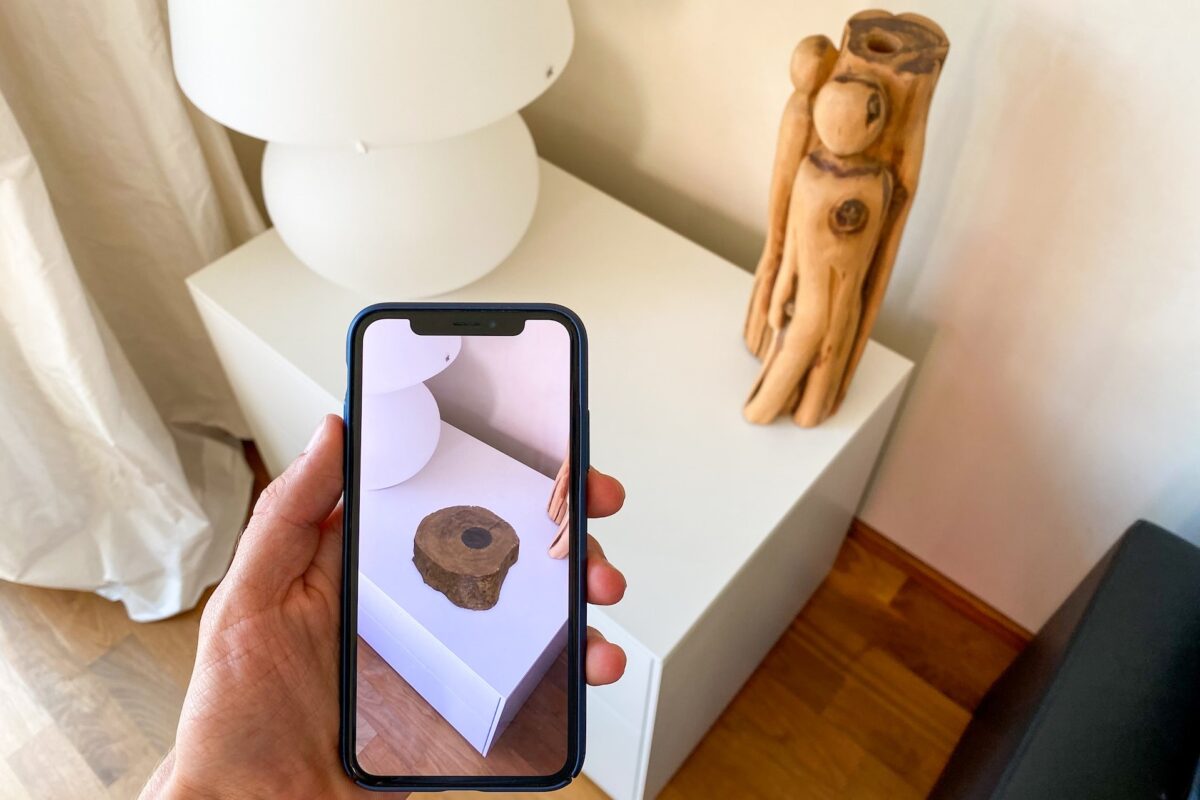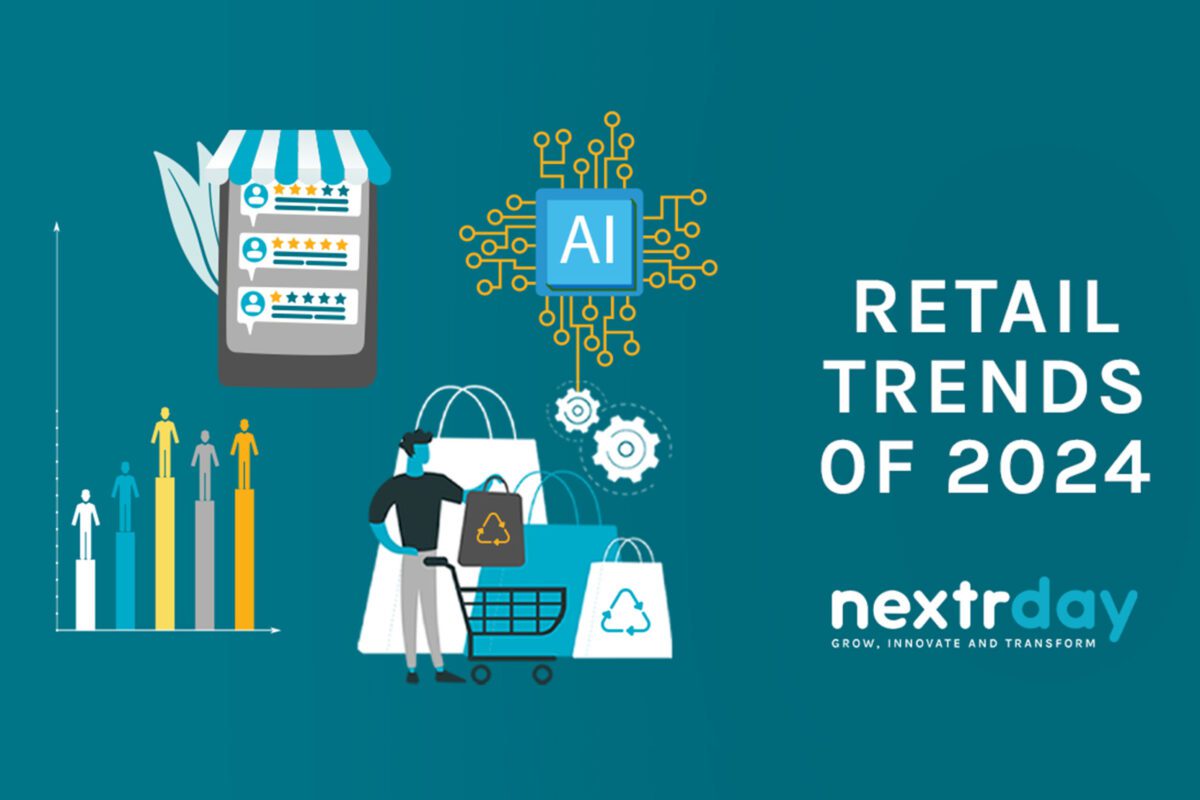The future is omnichannel
One of the key learnings for the retail industry from all the turbulence that has marked this decade, is that convenience is one of the most valued aspects of the shopping experience for customers. When it was not possible to buy from stores during lockdowns, customers flocked to the most convenient ecom websites, and when physical markets reopened, they sought ecom-like convenience from in-store shopping experiences.
During this period, channel dynamics kept changing. During 2020, in-store sales took a hit, whereas ecom sales skyrocketed [1]. Later on, in-store sales showed recovery, but ecom sales volumes are consistently seeing upward projections [2]. In the meanwhile, mobile has emerged as one of the most preferred channels, used daily or weekly by nearly 34% consumers in 2023 [3].
The contribution of each channel to the sales volumes will keep varying over time. But this isn’t the reason why retailers invest in omnichannel strategies. Instead, omnichannel is just an extension of customer-centric retail. In the following paragraphs, understand why omnichannel retail matters more now than ever before, what capabilities you should focus on, and how to implement them to grow your business in 2024.
What is omnichannel retail?
Omnichannel retail is a strategy in which retailers sell to customers at all possible places. This includes physical stores, ecom websites, mobile apps, social media apps, via 3rd party ecom websites, and more.
Omnichannel retailing enables businesses to meet customers wherever they are, instead of bringing customers to a specific channel. Therefore, it takes customer convenience to a new height, and enables businesses to sell more, while delivering an improved customer experience. In this manner it eliminates friction from the core aspects of the customer journey.
However, the capability to sell anywhere is just one aspect of omnichannel retail. Others include the ability to personalise experiences for customers using data collected from each of these channels, and integrating each channel with others to create seamless cross-channel journeys.
To use omnichannel to your advantage, it is ideal to focus your omnichannel efforts at those aspects of the customer journey which matter the most to the customer, and where the propensity to use multiple channels is the highest.

Omnichannel retail: key focus areas in 2024
Omnichannel retail is not just about acquiring and implementing new technologies. Omnichannel strategies pay off only when they are operationalized with a customer-centric mindset – which requires you to place customers at the heart of every decision.
Here are some of the key areas to focus on in 2024 to grow your business with omnichannel retail.
Adopting ecommerce capabilities
This is one of the foundational steps for businesses that continue to sell only via brick-and-mortar stores. Why? For two key reasons:
- It enables customers to buy from you from the comfort of their home. And even if they don’t buy your products, they become aware of your brand and in the process, become prospects towards whom you can target your marketing efforts.
- It helps you expand your reach to a larger fraction of the market. Instead of relying solely on footfall, you can now expand your sales volumes by selling to online buyers.
Ecommerce is not just about setting up a website, listing your products there, and connecting it to a payment gateway. It requires partnerships with logistics providers, and a solid understanding of online marketing tactics and advertisement strategies.
Moreover, it is advised to not reinvent the wheel by building everything on your own. You can make use of 3rd-party marketplaces like Amazon, or leverage ecom capabilities providers like Shopify to quickly build an ecom storefront for your business. At the early stages, each penny of investment matters – so it’s best to invest only in the highest RoI products and scale up from thereon.
Rethinking in-store experiences
In-store retail is no longer about seeing, trying, and buying the product. When the convenience of ecommerce is available to your customers, they expect in-store experiences to be more convenient and valuable than traditional in-store experiences.
According to a 2023 survey, what customers want the most when it comes to in-store experiences, is self-service checkouts (wanted by 42%), in-store guided navigation (41%), and the ability to see store inventory on mobile [3]. Self-service checkout serves to eliminate the friction introduced by long queues, and in-store navigation helps buyers pinpoint the item they are looking for without hassle.
These features are supported by robust digital management capabilities driving store operations. For example, in order to guide a customer to a product on your shelf, your systems must not only reflect accurate inventory data at all times, but also the exact position at which the product is placed at any point in time.
Mobile apps: the new digital storefront
The convenience of shopping via smartphone is almost unparalleled in a world where buyers spend 3+ hours on their phone each day [4]. But mobile apps can do more than just sell your stuff – they can also help you connect buyers to your helpdesk, and engage buyers and offer them loyalty points and discounts. Moreover, mobile apps can help you deliver connected device features like the ability to control an item you sell, or track its usage through an app.
Given that mobile is the next most preferred channel after in-store experiences, investing in a mobile app can prove to be a high payoff strategy for your business. However, it can also prove tricky for some businesses, shall they fail to drive their customers to download their apps.
Phygital retail: 2 key trends
With growing adoption of digital technology on the consumer side, the boundary between digital and physical worlds is growing increasingly blurred. In this phygital world, an experience can start in the physical world, and end in the digital world – or vice-versa. Here are 2 key trends associated with this shift.
Trend 1: BOPIS (Buy online, pickup in store)
BOPIS is a sales model in which an item is purchased via an ecom website or a mobile app, and the user picks that item from a store later that day, or the next. It saves them long queues, offers an easy payment experience, and quick fulfilment – in other words, the best of both in-store retail, and online shopping.
Needless to say, BOPIS capabilities can only be activated when the business already has an ecommerce capability.
Trend 2: Product placement with Augmented Reality (AR)
In some lines of business, it is important for the customer to be able to see the product in the surroundings in which it will be used. To this end, businesses are now making use of AR to showcase their products in real-world surroundings.
AR is already used by IKEA and Apple to help users see what their products will look like inside their home. Other industries that are making use of AR include fashion, apparel, electronics, and lifestyle.

Activating omnichannel retail: context matters
So, what does it take to activate omnichannel retail?
Omnichannel experiences are not created by adding more channels into your channel mix. In fact, they require a business to be thoroughly digitally-driven. To activate omnichannel experiences, businesses will have to undergo a transformational shift in how they conduct their business. Here are two key requirements for orchestrating omnichannel retail successfully:
- Cross-channel integration: Integration between multiple channels is crucial to help your teams understand what has happened before the buyer landed onto the current channel. For example, if a high-value online buyer shops at your store for the first time, are they recognized by your PoS agent? Are they rewarded for their loyalty to your business?
- Single source of truth: Another important driver of omnichannel experiences is consistent data driving operations across each channel. For example, your inventory data should be harmonised across multiple physical outlets and ecommerce backends. The staff at your sales outlets should be able to see a single view of the customer, with records of their transactions and interactions over the past.
Both of these indicate the importance of context in driving successful omnichannel experiences. In the absence of this context, omnichannel strategies will not only fail to deliver, they can also work against the key tenet of making things convenient for the customer.
For example, if a BOPIS capability is implemented without an effective notification system for store personnel, your customer may be forced to cite their order number during pickup – or worse, the item may already have been sold to another buyer while they were checking out.
While omnichannel experiences are critical for retailers today, implementing them requires a foundational shift in the operating model – something that is best carried out in partnership with an experienced consultant.
Summing it up
Omnichannel is the retail industry’s only future – and from what we have learned, buyers will flock to sellers that are ready to meet them where they are. Given the convenience that omnichannel retail offers, now is the best time for retailers to focus their efforts on experiences that matter the most.
While ecom, mobile apps, and digitally-driven in-store experiences are gaining traction rapidly, each business must focus on differentiating parts of their customer journey. To orchestrate omnichannel successfully, strategic planning will be of paramount importance, followed by a foundational shift in the operating model of the business. Those that are able to navigate this shift successfully will emerge as clear winners in the future of retail.
Sources
We love helping ambitious organizations reach new levels of sustainable growth through vision and purpose, strategy and execution, digital tools and go-to-market optimization.










